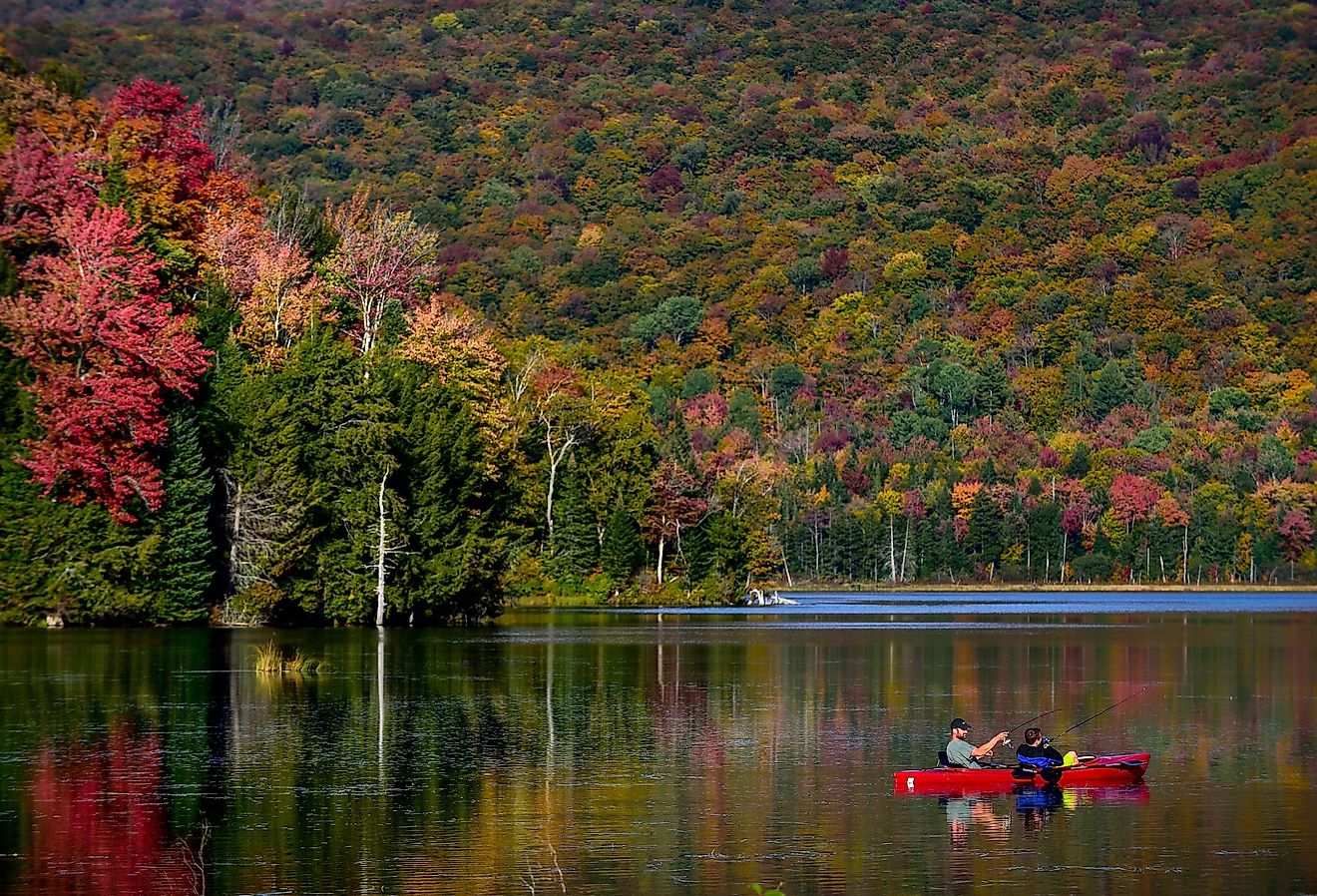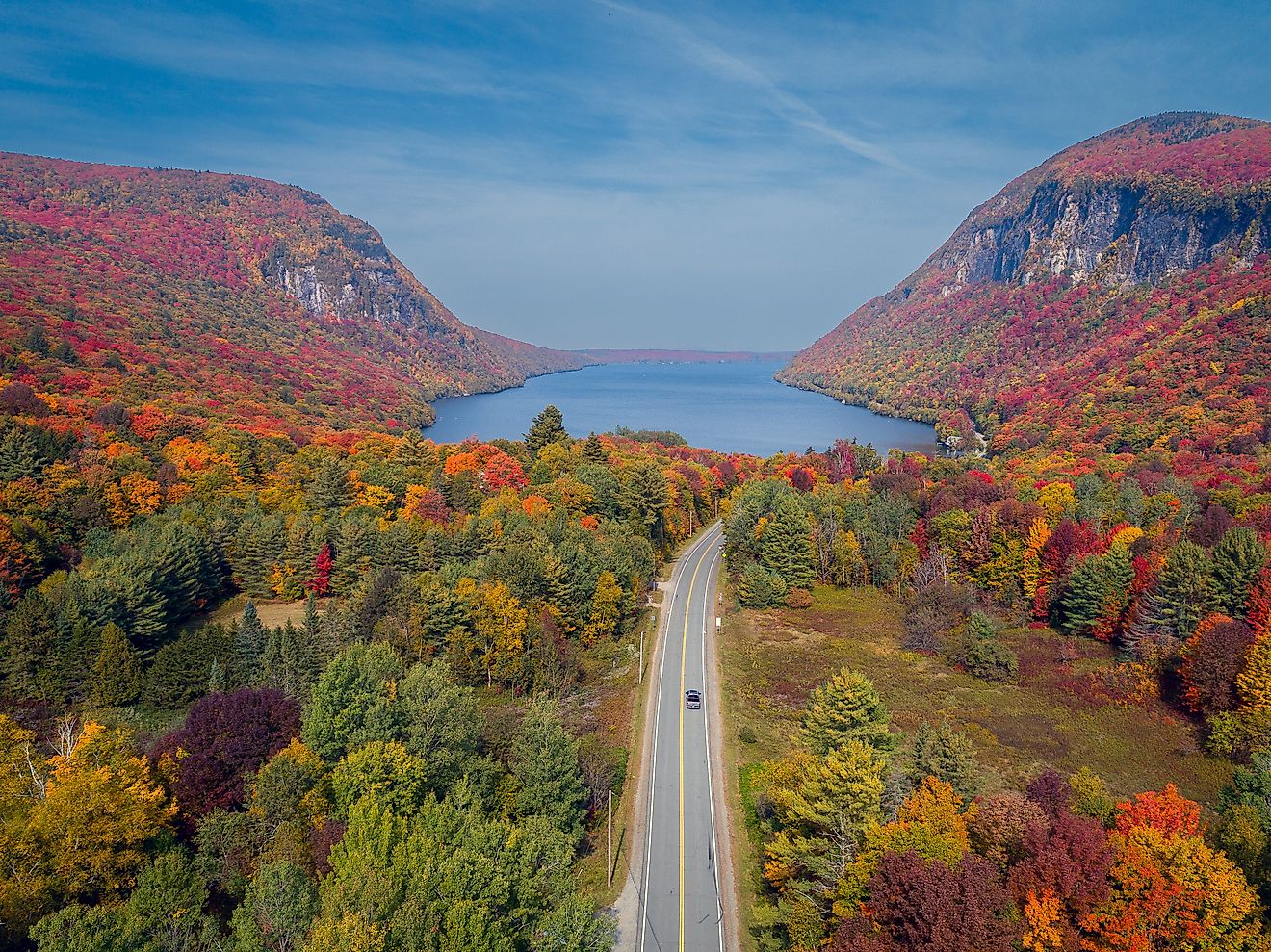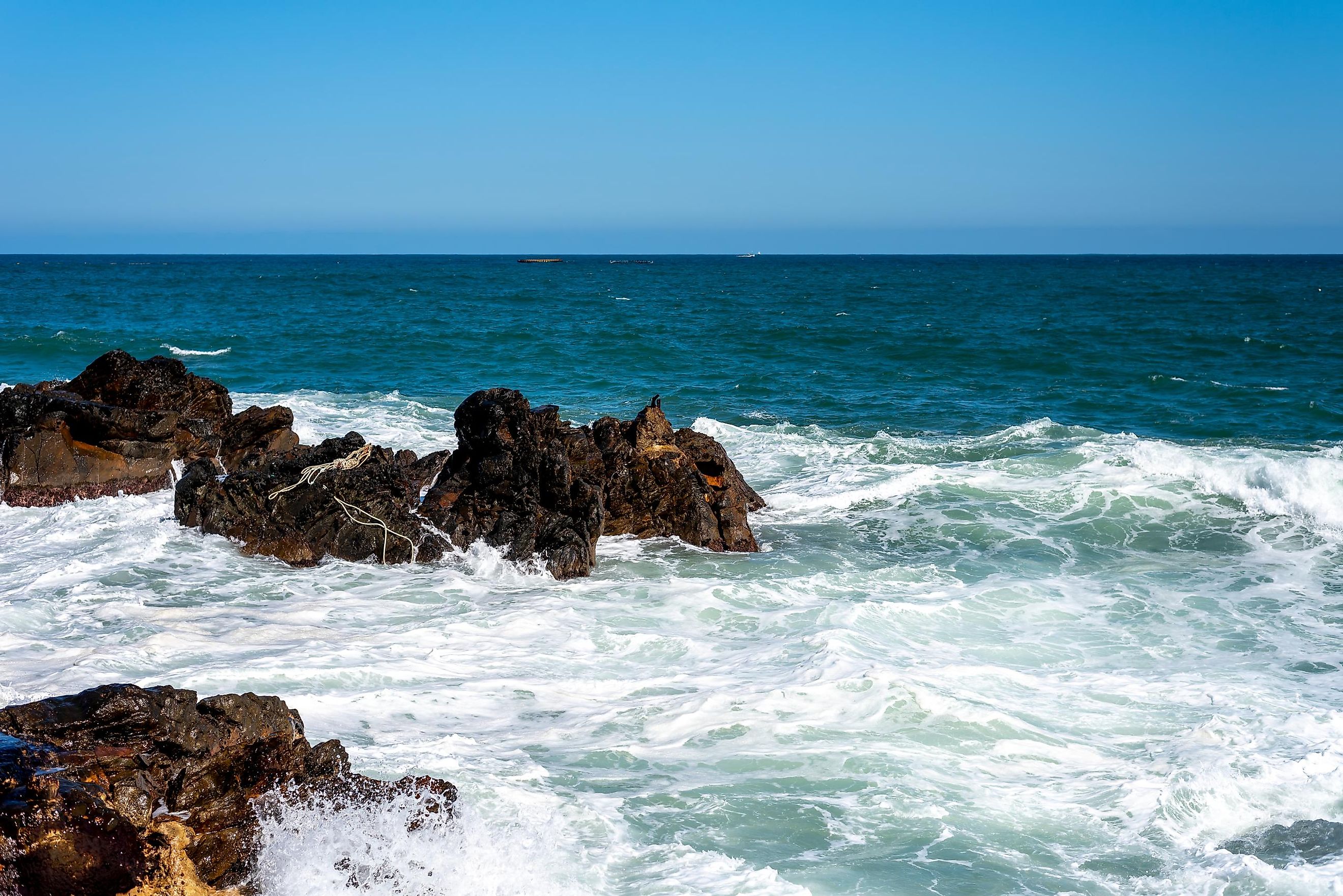
Sea Of Japan (East Sea)
A marginal sea is defined as a sea that is partially enclosed by islands, archipelagos, or peninsulas. They are usually much shallower than the open oceans and are therefore more affected by human activities. Covering an area of 978,000 km2, the Sea of Japan, also known as the East Sea, is a marginal sea of the western Pacific Ocean.
Where Is The Sea Of Japan?
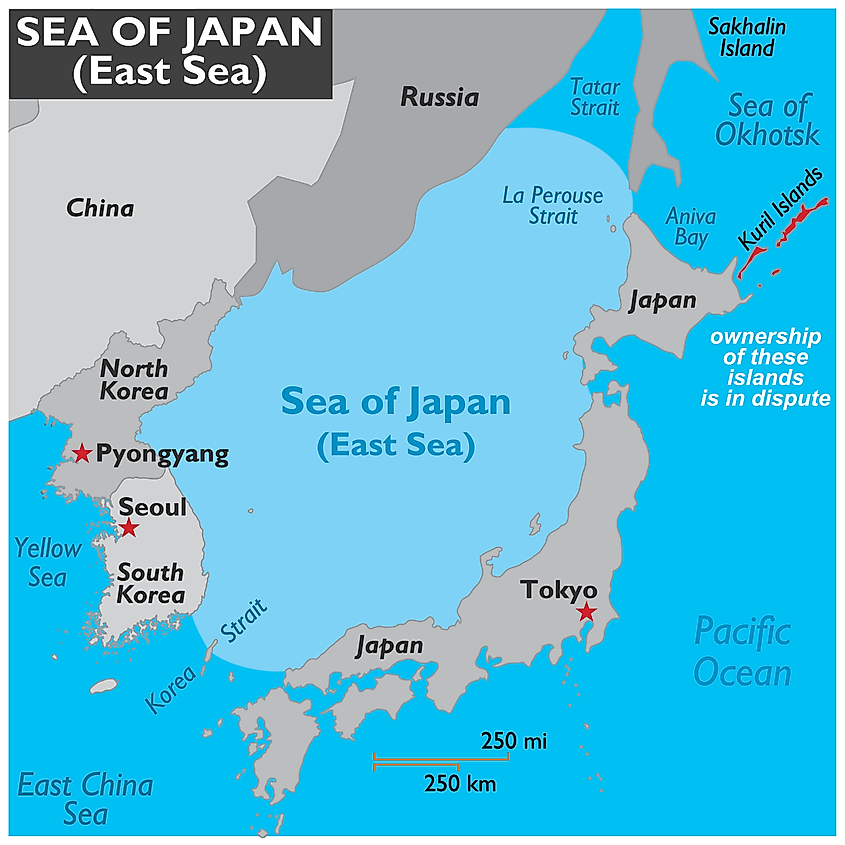
The Sea of Japan is a water body located in Eastern Asia that is bounded by Russia and Sakhalin Island in the north, by North Korea in the west, South Korea in the southwest, and by the Japanese archipelago (Hokkaidō, Honshū, and Kyūshū islands) in the east and south. The Sea of Japan is connected with the East China Sea in the south via the Tsushima and Korea straits and with the Okhotsk Sea in the north by the La Perouse and Tatar straits. In the east, it is connected with the Inland Sea of Japan via the Kanmon Strait and the Pacific Ocean by the Tsugaru Strait.
Naming Dispute
A dispute exists over the naming of this water body. The name "Sea of Japan" is supported by the Japanese government but not by all countries bordering this sea. In 1992, North Korea and South Korea raised an objection to the use of the name "Sea of Japan" during the Sixth United Nations Conference on the Standardization of Geographical Names. While North Korea proposed the use of the name "Korean East Sea", South Korea advocated for the use of the name "East Sea." Today, most maps and documents use either "Sea of Japan" or "East Sea" to name this water body. Some, however, use both names, often including the name "East Sea" in parentheses.
Geography
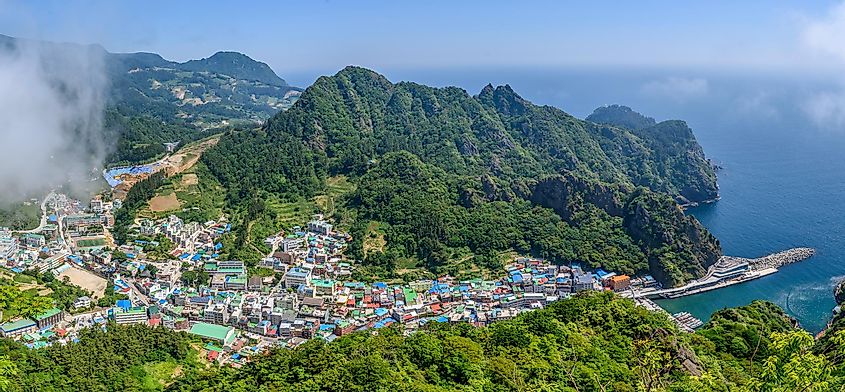
The maximum width of the Sea of Japan is 1,070 km and it is about 2,255 km in length. The sea has a maximum depth of 3,742 m, with its mean depth estimated at 1,752 m. The Sea of Japan comprises three major deep-water basins. These are the Japan Basin in the north, the Yamato Basin in the southeast, and the Tsushima Basin in the southwest. The sea’s coastline is weakly dissected and consists of high, steep banks like the Sado Ridge, the Okujiri Ridge, the Oki Ridge, Wakasa Ridge, and the Hakusan Banks.
The largest bays in the Sea of Japan are Peter the Great, Olga, Posyet Bay, Vladimira Bay, and the Sovetskaya Gavan in Russia; East Korea Bay in North Korea; and the Ishikari (Hokkaidō Island), Toyama and Wakasa (Honshū Island) in Japan. The Sea of Japan serves as the meeting point of the cold currents from the north and the warm currents from the south.
There are no large islands in the Sea of Japan. Except for the South Korean island of Ulleungdo, all the other small islands are situated near the eastern coast of the sea. These islands include Rebun, Rishiri, Okushiri, Sado, Moneron, Ōshima, Okinoshima, Askold, Putyatin, and Russky islands.
Marine Life
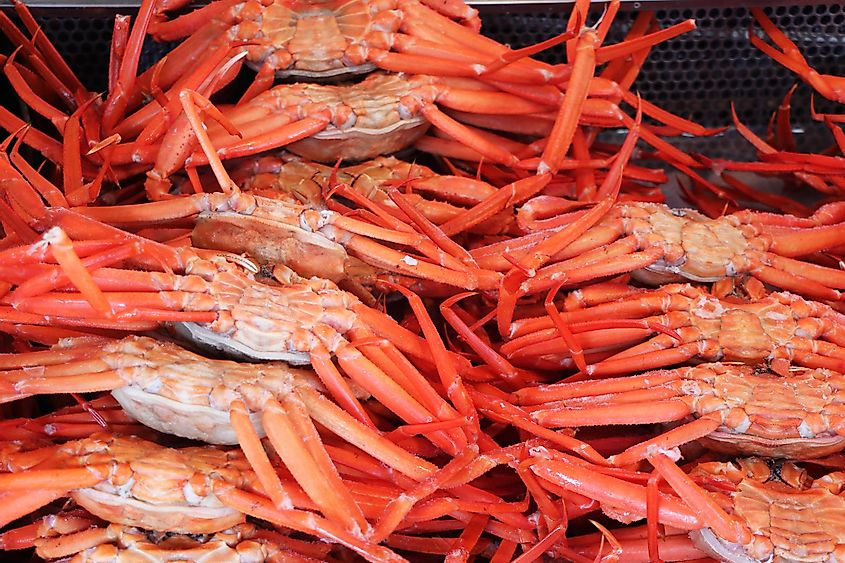
The Sea of Japan supports a rich diversity of marine life which includes more than 800 species of aquatic flora and 3,500 aquatic faunal species. About 1,000 fish species, 900 species of crustaceans, and 26 marine mammal species reside in the waters of the Sea of Japan. Some pelagic fish that are found here are mackerel, Jack mackerel, saury, sardines, anchovies, herring, and different salmon and trout species. The demersal fish in the sea include cod, Atka mackerel, and Alaskan pollack. Crustaceans like shrimps and crabs, mollusks like oysters, scallops, mussels, squid, and cuttlefish, and echinoderms like trepangs (sea cucumbers) also reside in the waters of the Sea of Japan. Marine mammals like seals and whales are also found here.
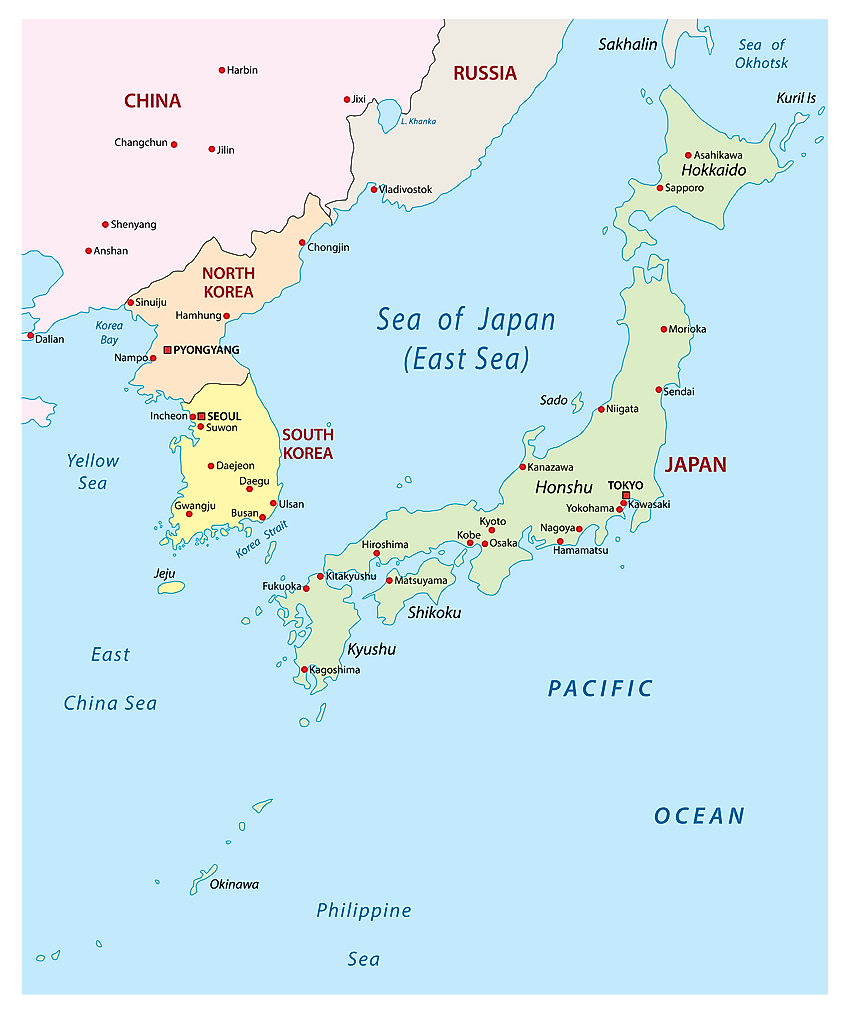
Economy
Mining for mineral deposits like magnetite, natural gas, and petroleum are some of the major economic activities that are carried out in the Sea of Japan. Fishing has been an economic mainstay in the region for centuries. The main Russian ports in the sea are Vladivostok, Sovetskaya Gavan, Nakhodka, Alexandrovsk-Sakhalinsky, and Kholmsk. The major North Korean ports in the Sea of Japan are Hamhung, Chongjin, and Wonsan. The notable Japanese ports located here are Niigata, Tsuruta and Maizuru.










